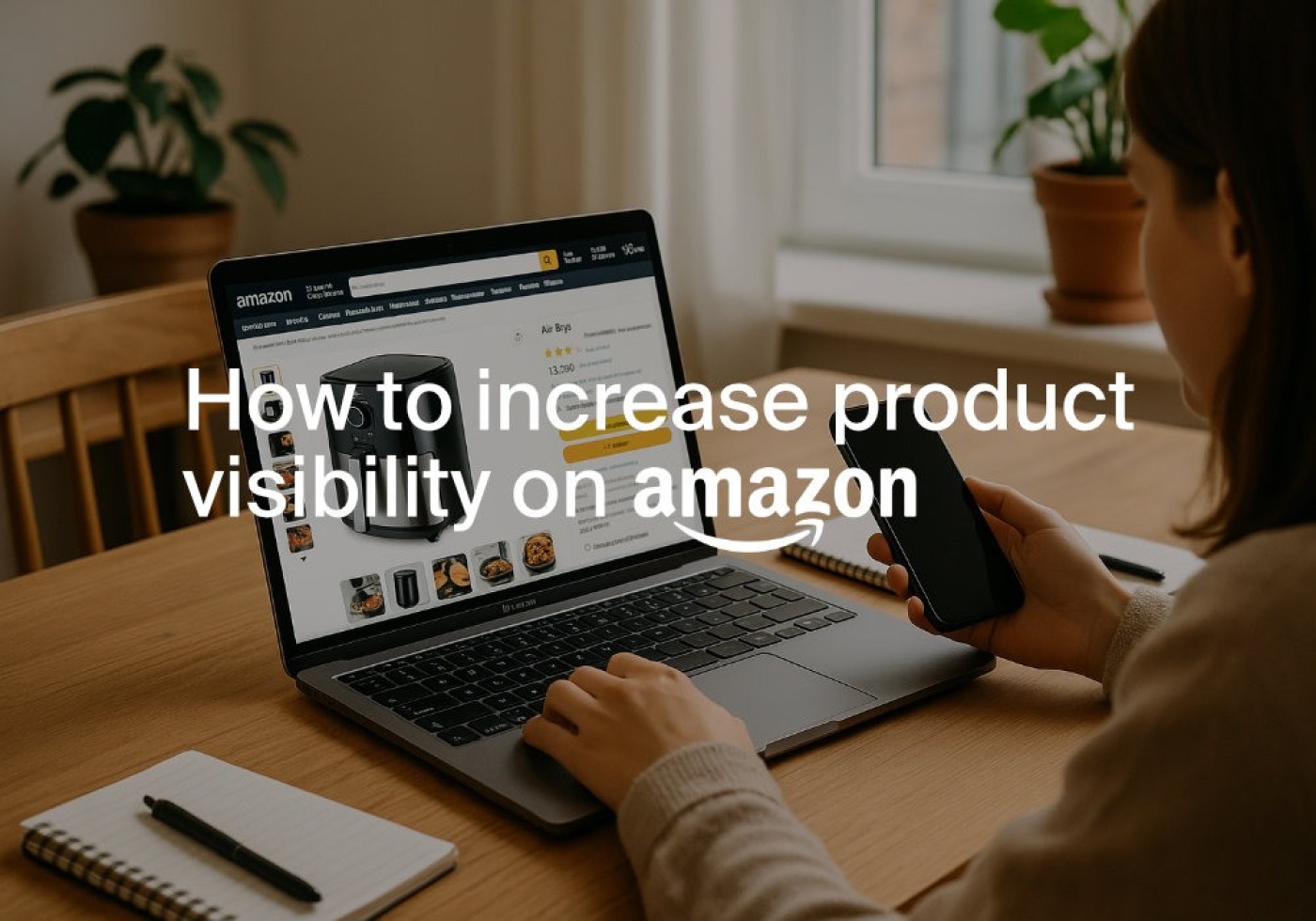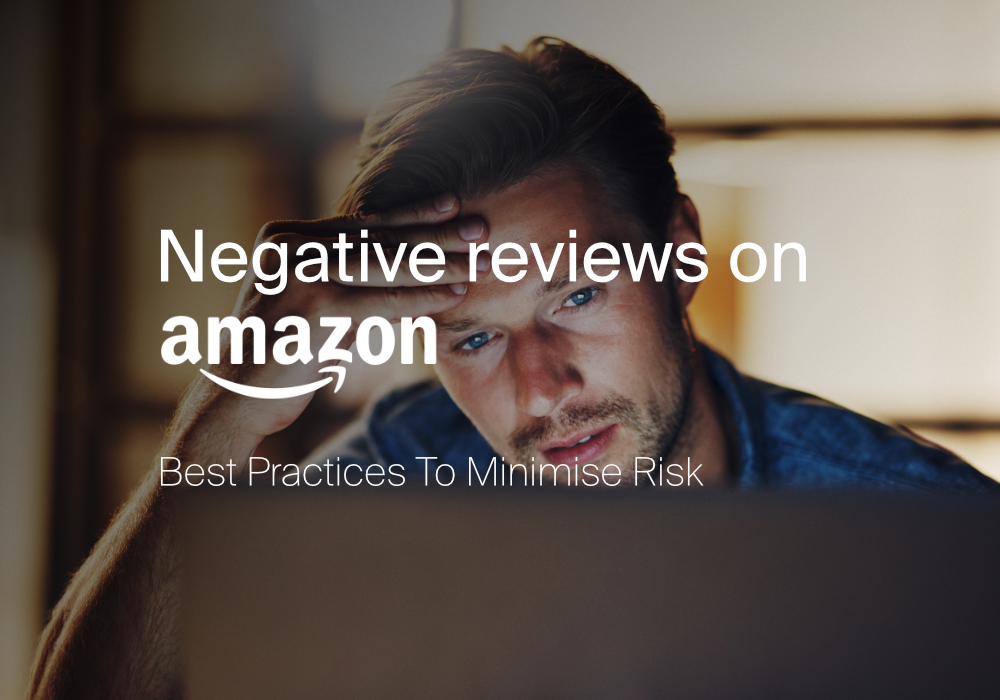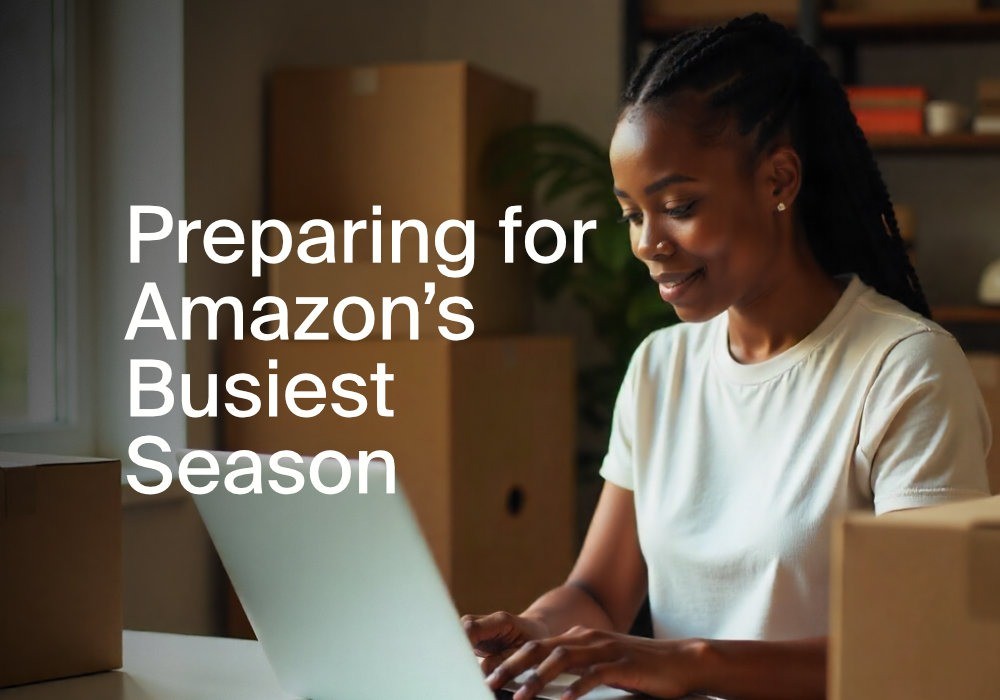Increasing product visibility on Amazon is one of the most important steps to growing your sales — but it’s also one of the most misunderstood. Whether you’re launching a new product or trying to breathe life into an underperforming listing, visibility is what determines whether shoppers actually find your product.
This guide outlines proven ways to improve Amazon product visibility while avoiding the common pitfalls that can hold you back. From listings and reviews to advertising and content, we cover what Amazon favours and how to win long-term.
Why product visibility matters on Amazon
Amazon operates as a search engine, not just a marketplace. That means ranking well in search results is essential — especially since most shoppers never go beyond the first page.
If your product isn’t visible, it won’t get clicks. If it doesn’t get clicks, it won’t convert. And if it doesn’t convert, your rankings drop further. Visibility is the engine that drives every part of your Amazon business.
What Amazon favours in visible listings
Amazon’s A9 algorithm determines where and how your product appears in search results. While the exact formula is not public, we know Amazon prioritises listings that:
- Convert well
- Have strong review signals
- Use high-relevance keywords
- Are competitively priced
- Have high-quality imagery
- Are consistently in stock
- Are fulfilled through FBA or fast shipping
Everything you do to improve visibility should align with these signals.
Optimise your product listing from top to bottom
A well-optimised product listing is the foundation of visibility. Without it, even the best advertising won't deliver long-term results.
Key elements your listing must include:
- Keyword-rich title – Aim for 150–180 characters, using your top relevant keywords at the start
- Five complete bullet points – Focus on key features, benefits, and customer objections
- High-quality images – Include 7+ images with lifestyle shots, infographics, and scale references
- A+ Content (if brand registered) – Adds SEO-rich modules and visuals that improve engagement
- Back-end search terms – Use all 249 bytes available, focusing on long-tail and alternate keywords
Don’t rely on guesswork. Use customer reviews, competitor listings, and keyword research to guide your content choices.
Encourage and automate reviews the right way
Customer reviews are one of the most powerful factors influencing visibility, both directly and indirectly.
Positive reviews:
- Increase your conversion rate (which improves ranking)
- Build trust with new shoppers
- Signal listing quality to Amazon
But review gathering must follow Amazon’s strict policies. Avoid offering incentives or using manipulative language.
Instead, use a compliant tool like Amzigo’s Automated Review Centre to send review requests directly through Amazon’s “Request a Review” system. Amzigo ensures full policy compliance while helping you increase reviews on autopilot, even for older listings that may have slowed down.
Use Amazon PPC to boost relevance and ranking
If you’re not showing up organically, advertising can help kickstart your visibility — especially for new listings.
Start with Sponsored Products, targeting both auto and manual campaigns. Use your best-performing keywords from manual campaigns to gradually boost organic rank.
For existing products, use PPC to maintain relevance on competitive terms and retarget interested shoppers. Just ensure your listing is fully optimised before scaling spend — otherwise, you’ll pay for clicks that don’t convert.
Update your images and content regularly
Amazon’s algorithm doesn’t reward stale listings. Even if your product is solid, competitors who refresh their content may outperform you over time.
Keep your listing fresh by:
- Updating images every 6–12 months based on review insights
- Adding new lifestyle imagery for relevance to current seasons
- Revisiting your title and bullet keywords to match current search trends
- Refreshing A+ content with seasonal or updated branding elements
If your product has been live for a while but visibility is declining, this is a low-cost, high-impact fix.
Avoid stockouts and pricing instability
Product visibility can take a serious hit if you run out of stock — Amazon deprioritises listings that can’t be fulfilled. Even when you restock, regaining ranking can be slow.
To stay visible, use tools like Amzigo’s Product Analysis feature to monitor:
- Days of inventory remaining
- Sales velocity
- Conversion rate
- Recommended restock dates
- Inventory alerts
Proactively managing stock helps keep your visibility stable and protects your search ranking over time.
Promote your Amazon listing off-Amazon
Amazon loves external traffic. Driving customers from outside platforms to your listing (especially if they convert) sends a strong positive signal.
Effective off-Amazon visibility boosters:
- Instagram and TikTok content using your product
- Google Ads targeting high-intent keyword searches
- Link in bio tools and influencers promoting your product with an Amazon referral link
- Blog articles and content marketing that link to your listing
Just make sure your listing is conversion-ready before sending traffic, or you risk wasting your ad spend.
Do’s and Don’ts of increasing visibility on Amazon
Do:
- Write keyword-optimised titles and bullet points
- Automate review requests using Amzigo
- Monitor inventory levels and restock before running low
- Use PPC to gain initial traction and test keywords
- Regularly update your listing content and imagery
- Drive external traffic when possible
Don’t:
- Offer incentives for reviews or break Amazon’s communication policies
- Leave listings with outdated or incomplete content
- Launch ads without a fully optimised listing
- Allow listings to go out of stock
- Copy competitor listings word-for-word
- Assume once a listing is live, the job is done — it’s never done
Conclusion
Increasing visibility on Amazon is never just about luck or timing — it’s about strategy. By combining strong listing optimisation, compliant review generation using tools like Amzigo, smart advertising, and proactive stock management, you create a flywheel effect that improves both traffic and conversion. Whether you're launching a new product or reviving an existing one, visibility is the key to staying competitive and growing your Amazon business.



